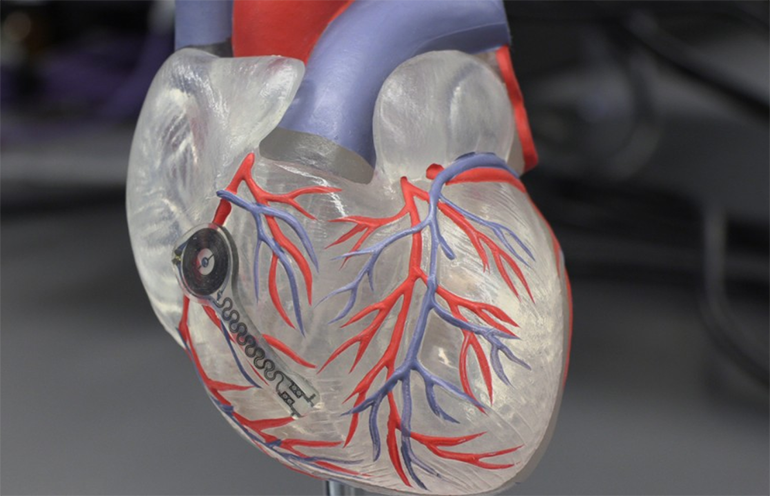Researchers at Northwestern University have created a cardiac pacemaker that dissolves away, negating the need for a procedure to remove it. The pacemaker was originally announced in 2021, but in this follow-up study, the researchers have enhanced its functionality. The device can now communicate with a network of wireless sensors that are worn on the skin, and can even communicate with the patient through haptic feedback to alert them of an issue, such as low power. The device also allows clinicians to monitor their patients by accessing the sensor data remotely.
A transient pacemaker has a variety of potential uses, including for patients who have just undergone cardiac surgery and require temporary pacing, those who are waiting for a more permanent device, and in newborns born with certain cardiac issues who require temporary pacing until the heart begins to function normally.

In all cases, avoiding a second procedure to remove a pacemaker is a big advantage, but this system can do much more and includes a series of wearable sensors that can monitor a large array of physiological parameters, including cardiac electrical activity, muscle tone, oxygen levels, temperature, respiration. and physical activity.
“This marks the first time we have paired soft, wearable electronics with transient electronic platforms,” said John Rogers, the leader of this research. “This approach could change the way patients receive care providing multinodal, closed-loop control over essential physiological processes — through a wireless network of sensors and stimulators that operates in a manner inspired by the complex, biological feedback loops that control behaviors in living organisms. ”

Interestingly, the pacemaker can also communicate with the patient. This occurs through a small haptic device that the patient can wear anywhere on their body. When an issue occurs with the pacemaker, such as malfunction or low battery power, the pacemaker can alert the patient using the haptic device, with different series of vibrations corresponding to different error messages.
“Current pacemakers are quite intelligent and respond well to the changing needs of the patients,” said Rishi Arora, another researcher involved in the study. “But the wearable modules do everything traditional pacemakers do and more. A patient basically wears a little patch on their chest and gets real-time feedback to control the pacemaker. Not only is the pacemaker itself bioresorbable, it is controlled by a soft, wearable patch that allows the pacemaker to respond to the usual activities of life without needing implantable sensors.”
See a video of the pacemaker dissolving below.
Studies in Science: A transient, closed-loop network of wireless, body-integrated devices for autonomous electrotherapy
